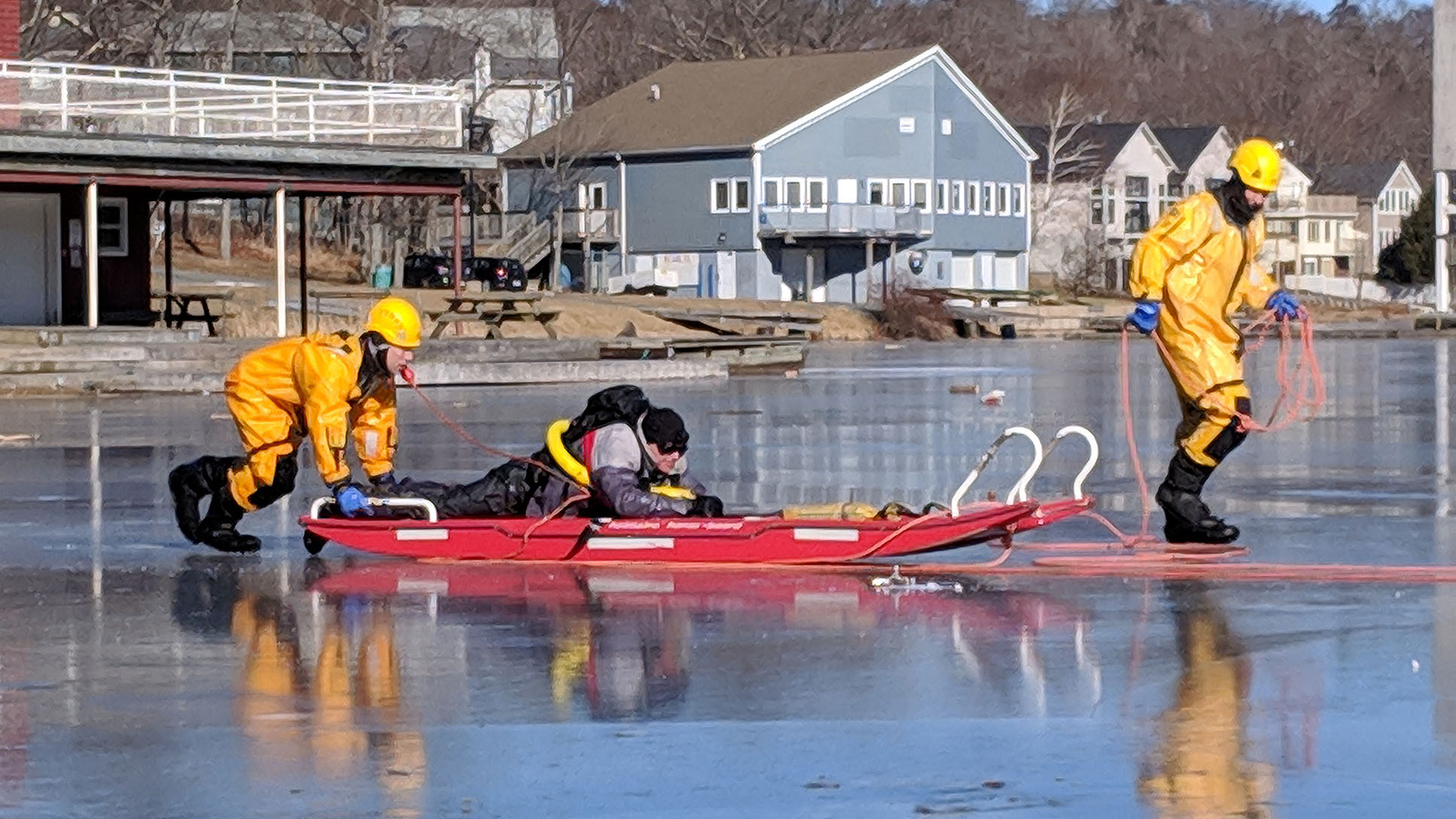ICE SAFETY
Frozen lakes: when to lace up your skates and when to stay away
Public event held in Dartmouth to educate the public

caption
Halifax Search and Rescue demonstrate different techniques to save a person who has fallen through the ice.A man in a thick black suit repeatedly dropped himself into frigid Lake Banook on Tuesday as part of an ice safety demonstration.
“We are here to talk about ice safety, ice thickness and ice rescue, in case anyone is unfortunate enough to go into this frigid water,” said Chuck Bezanson, assistant chief with the Halifax Regional Fire and Emergency.
The Dartmouth event was staged by Halifax Fire and Halifax Search and Rescue, which is responsible for ice rescues. Crew members donned bright yellow safety suits and repeatedly rescued their colleague, who jumped up and down on the thin lake ice until it cracked beneath his feet.
“People don’t realize that you can look at the surface and it can look perfectly frozen, and look exactly like it did yesterday,” said Dan Bedell, Halifax Red Cross communications director. Related stories
“But underneath there could be moving water, eating away at the ice, there could be heat down from the sun. It can change drastically in 24 hours.”
Bedell said this is common in Nova Scotia, where the temperature can fluctuate rapidly, affecting ice thickness. During the demonstration, a member of Halifax Search and Rescue used a long, screwdriver-like tool to demonstrate the importance of proper ice thickness testing.
The Halifax Regional Municipality tests more than 80 lakes for ice thickness over the winter. The public is encouraged to check the ice thickness reports, available online or by calling 902-490-3577. The Red Cross’ official recommendation is a minimum of 20 centimetres for group skating.
Fatalities and ice safety
“In 2018, in the four Atlantic provinces, we are aware of at least 39 unintentional water related fatalities,” said Bedell.
Most of these cases happen in the summertime, he said, but a young man riding an ATV fell through lake ice on New Year’s Eve. His death was one reason Tuesday’s event was held.
“If you do go out in the winter, and get on the ice, and you do have some issues, we’re going to provide some tips and ideas as to how you are going to self-rescue, and get yourself out of that situation,” said Paul Service, head of communications for Halifax Search and Rescue.
Search and Rescue staff members said there are key points to remember in an ice emergency:
- Call for help; reach your arms forward on the ice
- Use air trapped in your clothing to get into a more horizontal position
- Kick your legs to help push your body onto the surface
- Slowly roll away from the open water and broken ice
- Distribute your body weight and crawl towards the shore
More detailed self-rescue information is available on the Canadian Red Cross website.

